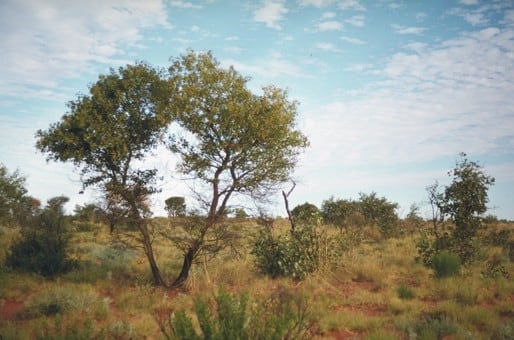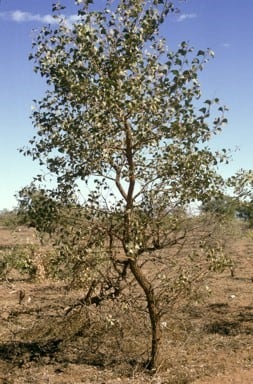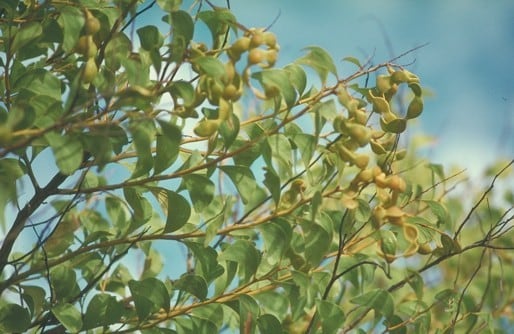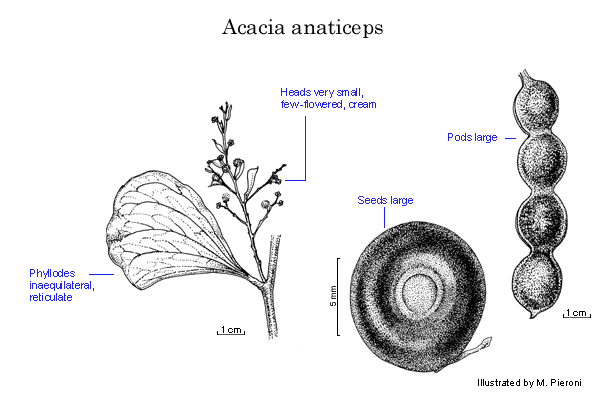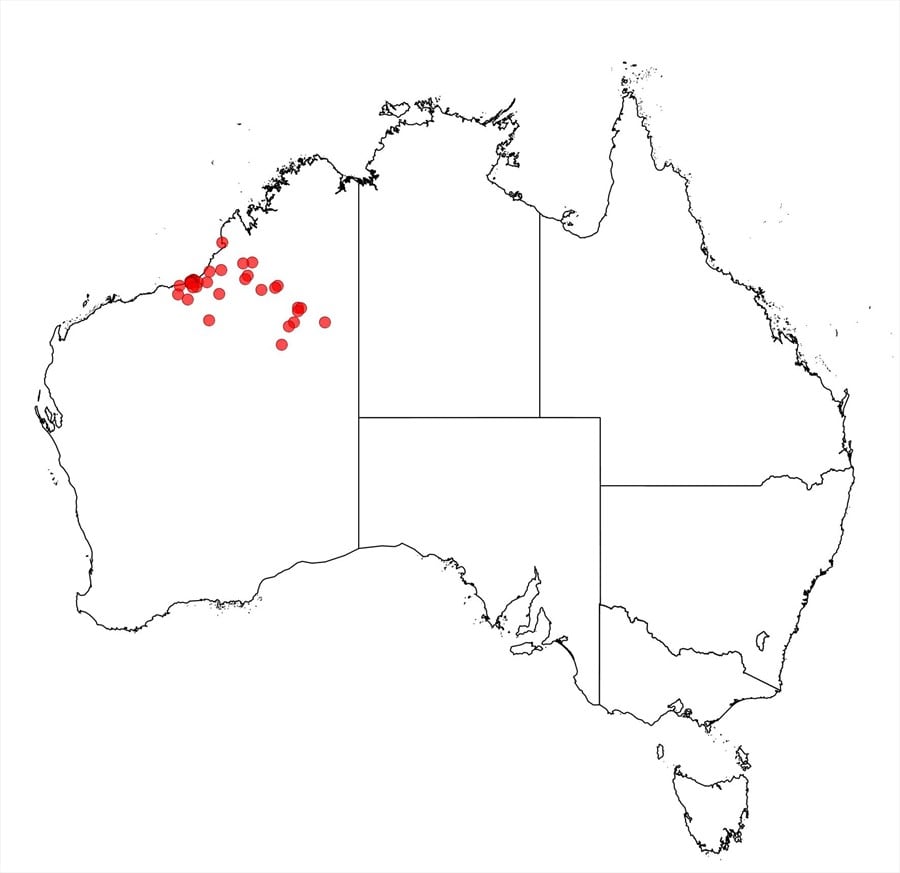Acacia anaticeps Tindale
WATTLE
Acacias of Australia
Common Name
Duck-head Wattle
Family
Fabaceae
Distribution
Occurs in the NW deserts from between Port Hedland and Broome on the coast, inland to between Lake Disappointment and Lake Gregory, W.A.
Description
Shrubby tree to 7 m high. Bark corky, deeply furrowed. Branchlets terete, finely ribbed, glabrous. Phyllodes inequilaterally obovate-elliptic to subflabellate, obliquely falcate, 4–7 (–9) cm long, 2–5 (–6) cm wide, obtuse to bluntly acute, coriaceous, green or subglaucous, glabrous, with (3–) 5–7 (–8) main longitudinal nerves and openly reticulate between. Inflorescences in elongated terminal or axillary racemes or panicles; raceme axes glabrous; peduncles 2–5 mm long, glabrous; heads 2–2.5 mm diam., 4–7-flowered, cream. Flowers 5-merous; sepals minute, free. Pods ±moniliform, raised over seeds and variably constricted between them, sub-straight to strongly curved and often variably twisted, to 28 cm long,1–2 cm wide, crustaceous to woody. Seeds longitudinal, broadly elliptic to circular, 9.5–14 mm long, dull, brown; areole strongly depressed, paler; funicle thickened, exarillate.
Phenology
Flowers May–June.
Habitat
Often grows on red dunes or in saline depressions.
Specimens
W.A.: Edgar Ra., K.F.Kenneally 5552 (PERTH); Anketell Ridge, A.S.Mitchell 1178 (PERTH); Canning Stock Route, S of Well 44, K.Palmer 25 (PERTH).
Notes
A well marked species with corky bark, unusual shaped phyllodes that are reminiscent of the outline of a duck’s head, minute flowers in few-flowered, cream heads, large pods and exarillate, nearly circular, compressed seeds with the areole strongly depressed. It regenerates from base of stem following fire.
FOA Reference
Data derived from Flora of Australia Volumes 11A (2001), 11B (2001) and 12 (1998), products of ABRS, ©Commonwealth of Australia
Author
Minor edits by B.R.Maslin & J.Rogers
R.S.Cowan, B.R.Maslin
This identification key and fact sheets are available as a mobile application:
URL: https://apps.lucidcentral.org/wattle/
© Copyright 2018. All rights reserved.
